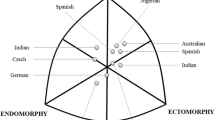Summary
There are two kinds of antler combats in male deer. Fighting is rare, violent, occurs between matched males, and can cause injury and death. Sparring is common, usually gentle, often occurs between unmatched males, and involves no risk of injury. We recorded 1308 sparring matches and only 6 fights between wild male woodland caribou (Rangifer tarandus caribou) in 2 years of study. In the 713 sparring matches between males with unequal antlers, the animal with smaller antlers initiated close to half of the encounters, but terminated nearly 90% of them. That was true whether a sparring match involved two adults, two yearlings, or an adult against a yearling. We argue that the best interpretation of that shift in the decisions of the smaller-antlered male is that sparring serves to assess a partner's weight and strength relative to one's own. Thus, through sparring, antlers could be used to allow a form of tactile (proprioceptive) assessment of fighting ability, which could be the basis for subsequent visual assessment at a distance.
Similar content being viewed by others
References
Barrette C (1977) Fighting behavior of muntjac and the evolution of antlers. Evolution 31:169–176
Barrette C (1986) Fighting behavor of wild Sus scrofa. J Mammal 67:177–179
Barrette C, Vandal D (1986) Social rank, dominance, antler size, and access to food in snow-bound wild woodland caribou. Behaviour 97:118–146
Bergerud AT (1974) Rutting behaviour of Newfoundland caribou. In: Geist V, Walther FR (eds) The behaviour of ungulates and its relation to management. IUCN Publ New Ser 24:395–435
Bowyer RT (1986) Antler characteristics as related to social status of male southern mule deer. Southwest Nat 31:289–298
Clutton-Brock TH (1982) The functions of antlers. Behaviour 78:08–125
Clutton-Brock TH, Albon SD, Gibson RM, Guiness FE (1979) The logical stag: adaptive aspects of fighting in red deer (Cervus elaphus L.). Anim Behav 27:211–225
Cochran WG (1977) Sampling techniques. Wiley, New York
Crespi BJ (1986) Size assessment and alternative fighting tactics in Elaphrothrips tuberculatus (Insecta: Thysanoptera). Anim Behav 34:1324–1335
Enquist M, Jakobsson S (1986) Decision making and assessment in the fighting behaviour of Nannacara anomala (Chichlidae, Pisces). Ethology 72:143–153
Enquist M, Ljungberg T, Zandor A (1987) Visual assessment of fighting ability in the cichlid fish Nannacara anomala. Anim Behav 35:1262–1264
Fuchs ER (1977) Behavior. In: Ables ED (ed) The Axis deer in Texas. Caesar Kleberg, pp 24–52
Geist V (1966) The evolution of horn-like organs. Behaviour 27:75–214
Geist V (1971) Mountain sheep. A study in behavior and evolution. University of Chicago Press, Chicago
Geist V (1974) On fighting strategies in animal combat. Nature 250:354
Geist V (1981) Behavior: adaptive strategies in mule deer. In: Wallmo OC (ed) Mule and black-tailed deer of North America. University of Nebraska Press, Nebraska, pp 157–224
Hirth DH (1977) Social behavior of white-tailed deer in relation to habitat. Wildl Monogr 53:1–55
Huxley JS (1926) The annual increment of the antlers of the red deer (Cervus elaphus). Proc Zool Soc London 58:1024–1036
Hyvärinen H, Kay RNB, Hamilton, WJ (1977) Variation in the weight, specific gravity and composition of the antlers of red deer (Cervus elaphus L.). Br J Nutr 38:301–311
Kendrick KM, Baldwin BA (1987) Cells in temporal cortex of conscious sheep can respond preferentially to the sight of faces. Science 236:448–450
Koutnik DL (1983) The role of ritualized fighting behaviour in the social system of California mule deer. Biol Behav 8:81–93
Kucera TE (1978) Social behavior and breeding system of the desert mule deer. J Mammal 59:463–476
Lincoln GA (1972) The role of antlers in the behaviour of red deer. J Exp Zool 182:233–250
Michael ED (1968) Aggressive behavior of white-tailed deer. Southwest Nat 13:411–420
Miura S (1984) Social behavior and territoriality in male Sika deer (Cervus nippon Temminck 1838) during the rut. Z Tierpsychol 64:33–73
Morizi SK (1984) The co-evolution of cranial morphology and fighting behavior in deer, the Cervidae. PhD thesis, University of Pennsylvania, Pennsylvania
Peek JM, van Ballenberghe V, Miquelle DG (1986) Intensity of interactions between rutting bull moose in central Alaska. J Mammal 67:423–426
Popp JW (1987) Choice of opponents during competition for food among american goldfinches. Ecology 75:31–36
Rowe JS (1984) Lichen woodlands in northern Canada. In: Olson R, Hastings R, Geddes F (eds) Northern ecology and resource management. University of Alberta Press, Alberta, pp 225–237
Schaller GB (1967) The deer and the tiger. Chicago University Press, Chicago
Vandal D (1983) Le caribou des Grands jardins: légende et réalité. Carnets Zool 43:36–41
Vandal D (1984) Écologie comportementale du caribou du parc des Grands-jardins. MSc thesis, Université Laval, Québec, Canada
Vandal D, Barrette C (1985) Snow depth and feeding interactions at snow craters in woodland caribou. In: Meredith TC, Martell AM (eds) Proc 2nd North American caribou workshop. McGill Subarctic Research Paper, 40:199–212
Wachtel MA, Bekoff, M, Fuenzalida CE (1978) Sparring by mule deer during rutting: class participation, seasonal changes, and the nature of asymmetric contests. Biol Behav 3:319–330
Author information
Authors and Affiliations
Additional information
Offprint requests to: C. Barrette
Rights and permissions
About this article
Cite this article
Barrette, C., Vandal, D. Sparring, relative antler size, and assessment in male caribou. Behav Ecol Sociobiol 26, 383–387 (1990). https://doi.org/10.1007/BF00170894
Received:
Accepted:
Issue Date:
DOI: https://doi.org/10.1007/BF00170894



